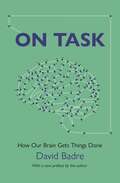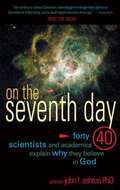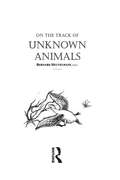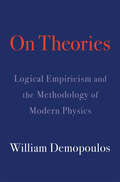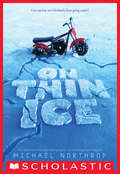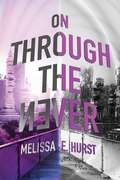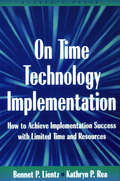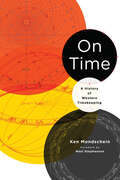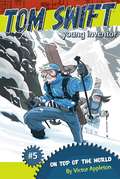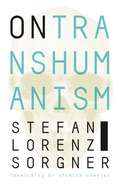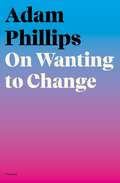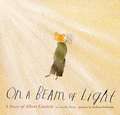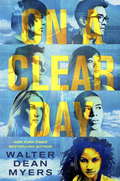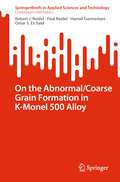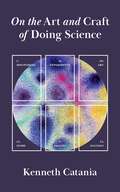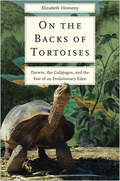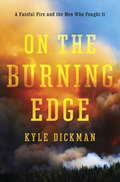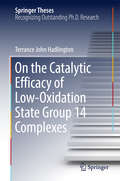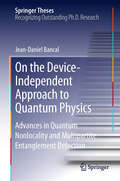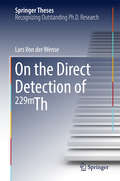- Table View
- List View
On Task: How Our Brain Gets Things Done
by David BadreA look at the extraordinary ways the brain turns thoughts into actions—and how this shapes our everyday livesWhy is it hard to text and drive at the same time? How do you resist eating that extra piece of cake? Why does staring at a tax form feel mentally exhausting? Why can your child expertly fix the computer and yet still forget to put on a coat? From making a cup of coffee to buying a house to changing the world around them, humans are uniquely able to execute necessary actions. How do we do it? Or in other words, how do our brains get things done? In On Task, cognitive neuroscientist David Badre presents the first authoritative introduction to the neuroscience of cognitive control—the remarkable ways that our brains devise sophisticated actions to achieve our goals. We barely notice this routine part of our lives. Yet, cognitive control, also known as executive function, is an astonishing phenomenon that has a profound impact on our well-being.Drawing on cutting-edge research, vivid clinical case studies, and examples from daily life, Badre sheds light on the evolution and inner workings of cognitive control. He examines issues from multitasking and willpower to habitual errors and bad decision making, as well as what happens as our brains develop in childhood and change as we age—and what happens when cognitive control breaks down. Ultimately, Badre shows that cognitive control affects just about everything we do.A revelatory look at how billions of neurons collectively translate abstract ideas into concrete plans, On Task offers an eye-opening investigation into the brain’s critical role in human behavior.
On The Seventh Day
by John AshtonFor all their intellectual gifts, those with PhD's are hungry for the same thing the rest of the population seeks; peace and spiritual fulfillment. Some hide behind a cool, clinical exterior, yet grapple with internal insecurities, fears, and disappointments. The scientific mind is eager to find truth; indeed, the very pursuit energizes scientists from a plethora of disciplines and backgrounds. This book was compiled for them. It contains not only "scientific" inquiries into the miraculous, but personal and poignant travels on the road to serenity. Over 40 PhD's in this book explore the linkage between science and faith, and what that means not only to individuals, but to the entire planet, as well. For example, meet: The skeptic who realized that this solution to a problem was not only wrong, but destructive. Read how a miraculous solution to a vexing problem brought him to faith. A psychiatrist who saw her career and personal life transformed by the intersection of faith and knowledge. Scientists who gaze at the heavens, and peer at microscopic creatures to better understand the world in which we live. If you are a friend who wants to introduce your scientist friend to God, then you've found the perfect gift with On the Seventh Day. If you are a skeptic, have a read. You'll be amazed that you've taken this path in your search for truth. In this book, you too can find rest from this hard business called life.
On The Track Of Unknown Animals
by Bernard HeuvelmansFirst published in 1995. It will soon be forty years since the original edition of this work, Sur la piste des bêtes ignorées (1955), appeared in French. With this book, the great adventure of ‘Cryptozoology’, the science of hidden animals, began.
On Theories: Logical Empiricism and the Methodology of Modern Physics
by William DemopoulosA renowned philosopher’s final work, illuminating how the logical empiricist tradition has failed to appreciate the role of actual experiments in forming its philosophy of science. The logical empiricist treatment of physics dominated twentieth-century philosophy of science. But the logical empiricist tradition, for all it accomplished, does not do justice to the way in which empirical evidence functions in modern physics. In his final work, the late philosopher of science William Demopoulos contends that philosophers have failed to provide an adequate epistemology of science because they have failed to appreciate the tightly woven character of theory and evidence. As a consequence, theory comes apart from evidence. This trouble is nowhere more evident than in theorizing about particle and quantum physics. Arguing that we must consider actual experiments as they have unfolded across history, Demopoulos provides a new epistemology of theories and evidence, albeit one that stands on the shoulders of giants. On Theories finds clarity in Isaac Newton’s suspicion of mere “hypotheses.” Newton’s methodology lies in the background of Jean Perrin’s experimental investigations of molecular reality and of the subatomic investigations of J. J. Thomson and Robert Millikan. Demopoulos extends this account to offer novel insights into the distinctive nature of quantum reality, where a logico-mathematical reconstruction of Bohrian complementarity meets John Stewart Bell’s empirical analysis of Einstein’s “local realism.” On Theories ultimately provides a new interpretation of quantum probabilities as themselves objectively representing empirical reality.
On Thin Ice (Scholastic Press Novels Ser.)
by Michael NorthropNew York Times bestselling author Michael Northrop captures the middle-school experience -- from the hurt and horror to the hope -- in this powerful story of acceptance and identity.If I did something risky now, something big -- it's almost like it wouldn't even be my fault. Almost like it might even work.Ked Eakins is about to lose everything.He's just discovered that his dad has gambled away their rent money. They're going to get kicked out of their home.But Ked is determined to fight back. He hatches a plan to save their apartment by rebuilding a vintage minibike in his school's maker space, which he'll sell for a profit.Still, the plan is a gamble of his own: Going to maker space forces Ked into the path of a school bully, who torments him about his progressive spinal condition.Can Ked -- with the help of some unlikely new friends -- find a way to fix the bike and save his family from going under before it's too late?New York Times bestselling author Michael Northrop has written a powerful story a boy who -- against all odds -- decides to bet on himself and create something new from broken pieces.
On This Day in America: An Illustrated Almanac of History, Sports, Science, and Culture
by John WagmanProvides a day-by-day account of different events that have happened in the almost five hundred years of the American experience, from 1492 through the 1980s. With over 4,000 facts.
On Through the Never
by Melissa E. HurstIn 2013, Bridger and Alora found a way to prevent Alora’s murder and return her to the century she was born in, preserving the timeline and preventing a possibly disastrous future. Back in the year 2147, Bridger is following in his father’s footsteps by wrapping up his military training at The Academy for Time Travel and Research. Alora is adjusting to life in the twenty-second century, and learning to master her powers; as a Dual Talent, she has the rare—and secret—ability to bend both space and time. But unrest is growing in the North American Federation. As the government moves to limit the rights of Purists, people who refuse genetic modifications, violent protests break out. At the same time, paranoia and anger about the existence of Dual Talents seems to be growing—both among Purists and within the government itself. Then a masked Time Bender arrives from the future. He insists that war is coming, and only Bridger and Alora can stop it. There’s just one problem: they have no memory of each other.
On Time Technology Implementation
by Bennet Lientz Kathryn ReaOn Time Technology Implementation presents technology implementation guidelines and lessons learned from over 30 years of successful, hands-on project experience.
On Time: A History of Western Timekeeping
by Kenneth MondscheinAn approachable, accessible history of timekeeping and the impact of the increasing precision and accuracy of time on humanity.Western culture has been obsessed with regulating society by the precise, accurate measurement of time since the Middle Ages. In On Time, Ken Mondschein explores the paired development of concepts and technologies of timekeeping with human thought. Without clocks, he argues, the modern world as we know it would not exist. From the astronomical timekeeping of the ancient world to the tower clocks of the Middle Ages to the seagoing chronometer, the quartz watch, and the atomic clock, greater precision and accuracy have had profound effects on human society—which, in turn, has driven the quest for further precision and accuracy. This quest toward automation—which gave rise to the Gregorian calendar, the factory clock, and even the near-disastrous Y2K bug—has led to profound social repercussions and driven the creation of the modern scientific mindset. Surveying the evolution of the clock from prehistory to the twenty-first century, Mondschein explains how both the technology and the philosophy behind Western timekeeping regimes came to take over the entire world. On Time is a story of thinkers, philosophers, and scientists, and of the thousand decisions that continue to shape our daily lives.
On Top of the World
by Victor AppletonHigh elevations equal high stakes for Tom! Tom is headed to Mount Everest. Not only will he get some sweet practice time in on his new foil kite snowboard, but he and Bud are going to put his latest invention--a robot Sherpa--to the test. At Everst's high elevations they will really be able to run the Sherpa through its paces. But Tom can't quite focus on the tasks at hand because while there are always rumors of the mysterious Yeti, Tom thinks he's seen one. And what's more is that there's a nasty bunch of hunters on the prowl to capture the yeti "at any cost." Tom knows that some things are better left a mystery and vows to do what he can to protect this natural environment--and any mysterious species inhabiting it.
On Transhumanism
by Stefan Lorenz SorgnerTranshumanism is widely misunderstood, in part because the media have exaggerated current technologies and branded the movement as dangerous, leading many to believe that hybrid humans may soon walk among us and that immortality, achieved by means of mind-uploading, is imminent. In this essential and clarifying volume, Stefan Lorenz Sorgner debunks widespread myths about transhumanism and tackles the most pressing ethical issues in the debate over technologically assisted human enhancement.On Transhumanism is a vital primer on the subject, written by a world-renowned expert. In this book, Sorgner presents an overview of the movement’s history, capably summarizing the twelve pillars of transhumanist discourse and explaining the great diversity of transhumanist responses to each individual topic. He highlights the urgent ethical challenges related to the latest technological developments, inventions, and innovations and compares the unique cultural standing of transhumanism to other cultural movements, placing it within the broader context of the Enlightenment, modernity, postmodernity, and the philosophical writings of Nietzsche. Engagingly written and translated and featuring an introduction for North American readers, this comprehensive overview of the cultural and philosophical movement of transhumanism will be required reading for students of posthumanist philosophy and for general audiences interested in learning about the transhumanist movement.
On Transhumanism
by Stefan Lorenz SorgnerTranshumanism is widely misunderstood, in part because the media have exaggerated current technologies and branded the movement as dangerous, leading many to believe that hybrid humans may soon walk among us and that immortality, achieved by means of mind-uploading, is imminent. In this essential and clarifying volume, Stefan Lorenz Sorgner debunks widespread myths about transhumanism and tackles the most pressing ethical issues in the debate over technologically assisted human enhancement.On Transhumanism is a vital primer on the subject, written by a world-renowned expert. In this book, Sorgner presents an overview of the movement’s history, capably summarizing the twelve pillars of transhumanist discourse and explaining the great diversity of transhumanist responses to each individual topic. He highlights the urgent ethical challenges related to the latest technological developments, inventions, and innovations and compares the unique cultural standing of transhumanism to other cultural movements, placing it within the broader context of the Enlightenment, modernity, postmodernity, and the philosophical writings of Nietzsche. Engagingly written and translated and featuring an introduction for North American readers, this comprehensive overview of the cultural and philosophical movement of transhumanism will be required reading for students of posthumanist philosophy and for general audiences interested in learning about the transhumanist movement.
On Understanding Emotion
by Melvin J. LaskyEmotions--fleeting, insubstantial, changeable, and ambiguous--seem to defy study and analysis. Nothing is more complex, mysterious, and subject to conflicting theories and interpretations than human emotion. Yet the central importance of emotion in human affairs is undeniable. Emotions affect all levels of life--personal, organizational, political, cultural, economic, and religious. Emotions give meaning to life. Emotional disturbances can destroy that meaning.How should emotions be studied? How can an understanding of the inner feelings of individuals illuminate important social interactions and human developments? In his book, Norman Denzin presents a systematic, in-depth analysis of emotion that combines new theoretical advances with practical applications. Based on an intensive, critical examination of classical and modern theoretical research--and on revealing personal interviews in which ordinary people express their emotional lives--he builds a new framework for understanding ordinary emotions and emotional disturbances.Denzin analyzes how people experience joy and pain, love and hate, anger and despair, friendship and alienation--and examines the personal, psychological, social, and cultural aspects of human emotion to provide new perspectives for understanding human experience and social interactions. He offers new insights on the role of emotions in family violence and recommends ways of helping people escape from recurring patterns of violence. And in criticizing current conceptions of emotionally disturbed people, he reveals the nature of their inner lives and the ways they perceive and relate to others. In sum, this book presents new insights on human relationships and human experience. It is now available in paperback for the first time, with a new introduction by the author.
On Wanting to Change
by Adam PhillipsFrom the UK’s foremost literary psychoanalyst, a dazzling new book on the universal urge to change our lives.We live in a world in which we are invited to change—to become our best selves through politics, or fitness, or diet, or therapy. We change all the time—growing older and older—and how we think about change changes over time too.We want to think of our lives as progress myths—as narratives of positive personal growth—at the same time as we inevitably age and suffer setbacks.Adam Phillips’s sparkling book On Wanting to Change explores the stories we tell about change, and the changes we actually make—and the fact that they don’t always go, or come, together.
On a Beam of Light: A Story of Albert Einstein
by Vladimir Radunsky Jennifer BerneA boy rides a bicycle down a dusty road. But in his mind, he envisions himself traveling at a speed beyond imagining, on a beam of light. This brilliant mind will one day offer up some of the most revolutionary ideas ever conceived. From a boy endlessly fascinated by the wonders around him, Albert Einstein ultimately grows into a man of genius recognized the world over for profoundly illuminating our understanding of the universe. Jennifer Berne and Vladimir Radunsky invite the reader to travel along with Einstein on a journey full of curiosity, laughter, and scientific discovery. Parents and children alike will appreciate this moving story of the powerful difference imagination can make in any life.
On a Clear Day
by Walter Dean MyersYoung heroes decide that they are not too young or too powerless to change their world in this gripping, futuristic young adult novel by the New York Times bestselling author of the Printz Award-winning Monster. It is 2035. Teens, armed only with their ideals, must wage war on the power elite. Dahlia is a Low Gater: a sheep in a storm, struggling to survive completely on her own. The Gaters live in closed safe communities, protected from the Sturmers, mercenary thugs. And the C-8, a consortium of giant companies, control global access to finance, media, food, water, and energy resources--and they are only getting bigger and even more cutthroat. Dahlia, a computer whiz, joins forces with an ex-rocker, an ex-con, a chess prodigy, an ex-athlete, and a soldier wannabe. Their goal: to sabotage the C-8. But how will Sayeed, warlord and terrorist, fit into the equation? Walter Dean Myers was a prolific author for young people, writing over one hundred books and receiving every major award in the field of children's literature during his lifetime. He was the National Ambassador for Young People's Literature during 2012 and 2013.From the Hardcover edition.
On the (Im)Possibility of Business Ethics: Critical Complexity, Deconstruction, and Implications for Understanding the Ethics of Business
by Minka WoermannCorporations, and the environments in which they operate, are complex, with changing multiple dimensions, and an inherent capacity to evolve qualitatively. A central premise of this study is that a postmodern reading of ethics represents an expression of, and an engagement with, the ethical complexities that define the business landscape. In particular, the deconstructive philosophy of Jacques Derrida offers a non-trivial reading of a complex notion of ethics, and thereby helps us to develop the skills necessary to critique and intervene in our practices, and to develop robust strategies for living in the absence of prescriptive ethical frameworks. Although a central premise of this study is that substantive ethical claims can only be generated within a given context, the study nevertheless presents readers with a meta-position that illustrates the type of considerations that should inform ethical reflection from a complexity perspective. In order to illustrate the value that this meta-position holds for business ethics, these considerations are explored in terms of the implications that they hold for our understanding of corporate social responsibility, for the practice of responsible management and leadership practices, and for teaching business ethics.
On the Abnormal/Coarse Grain Formation in K-Monel 500 Alloy (SpringerBriefs in Applied Sciences and Technology)
by Hamid Garmestani Robert J. Reidel Paul Reidel Omar S. Es-SaidThis book helps unlock the root cause of abnormal grain growth in a commercial nickel alloy. The chapters explore the effects of different solution treating and aging techniques, showing how they impact the hardness properties of hot-rolled and cold-drawn Monel K-500. The book covers how high-frequency induction heat treating can lead to severe duplex microstructure, and uncovers the surprising differences between solution treating in vacuum and convection air furnaces. This book is helpful to anyone seeking to optimize the performance of metal alloys.
On the Art and Craft of Doing Science
by Kenneth CataniaA scientist&’s personal reflections on how to harness creativity and curiosity to generate new ideas and discover the unexpectedLike any creative endeavor, science can be a messy and chaotic affair. On the Art and Craft of Doing Science shares the creative process of an innovative and accomplished scientist, taking readers behind the scenes of some of his most pioneering investigations and explaining why the practice of science, far from being an orderly exercise in pure logic, is a form of creative expression like any other art.Kenneth Catania begins by discussing how ideas set the stage for scientific breakthroughs and goes on to describe ways to approach experimental design. He sheds light on the importance of art in making discoveries and demonstrates how to find and tell a compelling story about a scientific result while accurately communicating its findings. What role does failure play in science? Is it possible to fail better? How do you define success? Catania provides insights to these and other questions, along the way sharing the lessons he&’s learned from diverse figures ranging from science philosopher Thomas Kuhn to novelist Stephen King.Blending illuminating historical examples with insights from Catania&’s own groundbreaking research in biology and neuroscience, On the Art and Craft of Doing Science draws parallels with art and writing to reveal the creative side to the practice of good science.
On the Backs of Tortoises: Darwin, the Galapagos, and the Fate of an Evolutionary Eden
by Elizabeth HennessyAn insightful exploration of the iconic Galápagos tortoises, and how their fate is inextricably linked to our own in a rapidly changing world. Finalist for the 2020 E.O. Wilson Literary Science Writing Award, sponsored by PEN America Literary Awards The Galápagos archipelago is often viewed as a last foothold of pristine nature. For sixty years, conservationists have worked to restore this evolutionary Eden after centuries of exploitation at the hands of pirates, whalers, and island settlers. This book tells the story of the islands&’ namesakes—the giant tortoises—as coveted food sources, objects of natural history, and famous icons of conservation and tourism. By doing so, it brings into stark relief the paradoxical, and impossible, goal of conserving species by trying to restore a past state of prehistoric evolution. The tortoises, Elizabeth Hennessy demonstrates, are not prehistoric, but rather microcosms whose stories show how deeply human and nonhuman life are entangled. In a world where evolution is thoroughly shaped by global history, Hennessy puts forward a vision for conservation based on reckoning with the past, rather than trying to erase it. &“Fresh, insightful . . . Hennessy&’s melding of human and natural history makes for thought-provoking reading.&” —Booklist (starred review) &“Gripping . . . well-researched and thought-provoking . . . whether you&’re well-versed in the intricacies of conservation or have only just begun to long for a look at the tortoises yourself. On the Backs of Tortoises is a natural history that asks important questions, and challenges us to think about how best to answer them.&” —Genevieve Valentine, NPR &“Wonderfully interesting, informative, and engaging, as well as scholarly.&” —Janet Browne, author of Charles Darwin: Voyaging and Charles Darwin: The Power of Place
On the Burning Edge: A Fateful Fire and the Men Who Fought It
by Kyle DickmanIn the tradition of Sebastian Junger's The Perfect Storm and Robert Kurson's Shadow Divers comes a true and heartbreaking tale of courage, difficult decisions, and ultimate sacrifice. On the Burning Edge, by award-winning journalist and former wildland firefighter Kyle Dickman, is the definitive account of the Yarnell Hill Fire. On June 28, 2013, a single bolt of lightning sparked an inferno that devoured more than eight thousand acres in northern Arizona. Twenty elite firefighters--the Granite Mountain Hotshots--walked together into the blaze, tools in their hands and emergency fire shelters on their hips. Only one of them walked out. Dickman brings to the story a professional firefighter's understanding of how wildfires ignite, how they spread, and how they are fought. He understands hotshots and their culture: the pain and glory of a rough and vital job, the brotherly bonds born of dangerous work. Drawing on dozens of interviews with officials, families of the fallen, and the lone survivor, he describes in vivid detail what it's like to stand inside a raging fire--and shows how the increased population and decreased water supply of the American West guarantee that many more young men will step into harm's way in the coming years.
On the Catalytic Efficacy of Low-Oxidation State Group 14 Complexes
by Terrance John HadlingtonThis outstanding thesis describes a detailed investigation into the use of low-oxidation-state group 14 complexes in catalysis, developed at the cutting edge of inorganic and organometallic chemistry. It includes the preparation of a number of landmark compounds, some of which challenge our current understanding of metal-metal bonding and low-oxidation-state main group chemistry. Among the many highlights of this thesis, the standout result is the development of the first well-defined, low- oxidation-state main group hydride systems as highly efficient catalysts in the hydroboration of carbonyl substrates, including carbon dioxide, which are as efficient as those observed in more traditional, transition-metal catalyses. These results essentially define a new subdiscipline of chemistry.
On the Device-Independent Approach to Quantum Physics
by Jean-Daniel BancalQuantum physics started in the 1920's with wave mechanics and the wave-particle duality. However, the last 20 years have seen a second quantum revolution, centered around non-locality and quantum correlations between measurement outcomes. The associated key property, entanglement, is recognized today as the signature of quantumness. This second revolution opened the possibility of studying quantum correlations without any assumption on the internal functioning of the measurement apparata, the so-called Device-Independent Approach to Quantum Physics. This thesis explores this new approach using the powerful geometrical tool of polytopes. Emphasis is placed on the study of non-locality in the case of three or more parties, where it is shown that a whole new variety of phenomena appear compared to the bipartite case. Genuine multiparty entanglement is also studied for the first time within the device-independent framework. Finally, these tools are used to answer a long-standing open question: could quantum non-locality be explained by influences that propagate from one party to the others faster than light, but that remain hidden so that one cannot use them to communicate faster than light? This would provide a way around Einstein's notion of action at a distance that would be compatible with relativity. However, the answer is shown to be negative, as such influences could not remain hidden.
On the Direct Detection of 229m Th
by Lars Von der WenseThis thesis describes the first detection of a nuclear transition that had been sought for 40 years, and marks the essential first step toward developing nuclear clocks. Atomic clocks are currently the most reliable timekeepers. Still, they could potentially be outperformed by nuclear clocks, based on a nuclear transition instead of the atomic transitions employed to date. An elusive, extraordinary state in thorium-229 seems to be the only nuclear transition suitable for this purpose and feasible using currently available technology. Despite repeated efforts over the past 40 years, until recently we had not yet successfully detected the decay of this elusive state. Addressing this gap, the thesis lays the foundation for the development of a new, better frequency standard, which will likely have numerous applications in satellite navigation and rapid data transfer. Further, it makes it possible to improve the constraints for time variations of fundamental constants and opens up the field of nuclear coherent control.
On the Ecology of Australia’s Arid Zone
by Hans LambersThis book will appeal to an international audience as well as be irresistible to local readers. Anyone working or with an interest in Australia’s arid zone should need ready access to this book. There is no equivalent publication out there at the moment, and this book has many authoritative chapters, richly illustrated with colourful material.The challenge of this book was to assemble current knowledge on particular topics and concepts, and principles relating to them. It is also forward-looking by identifying where there are gaps or inadequacies in knowledge, and where future research needs to be directed. Lead authors were encouraged to take such an approach; they had the opportunity to involve any author they considered appropriate. The final product shouldbe a fabulous resource, also for university courses, especially at MSc level.
